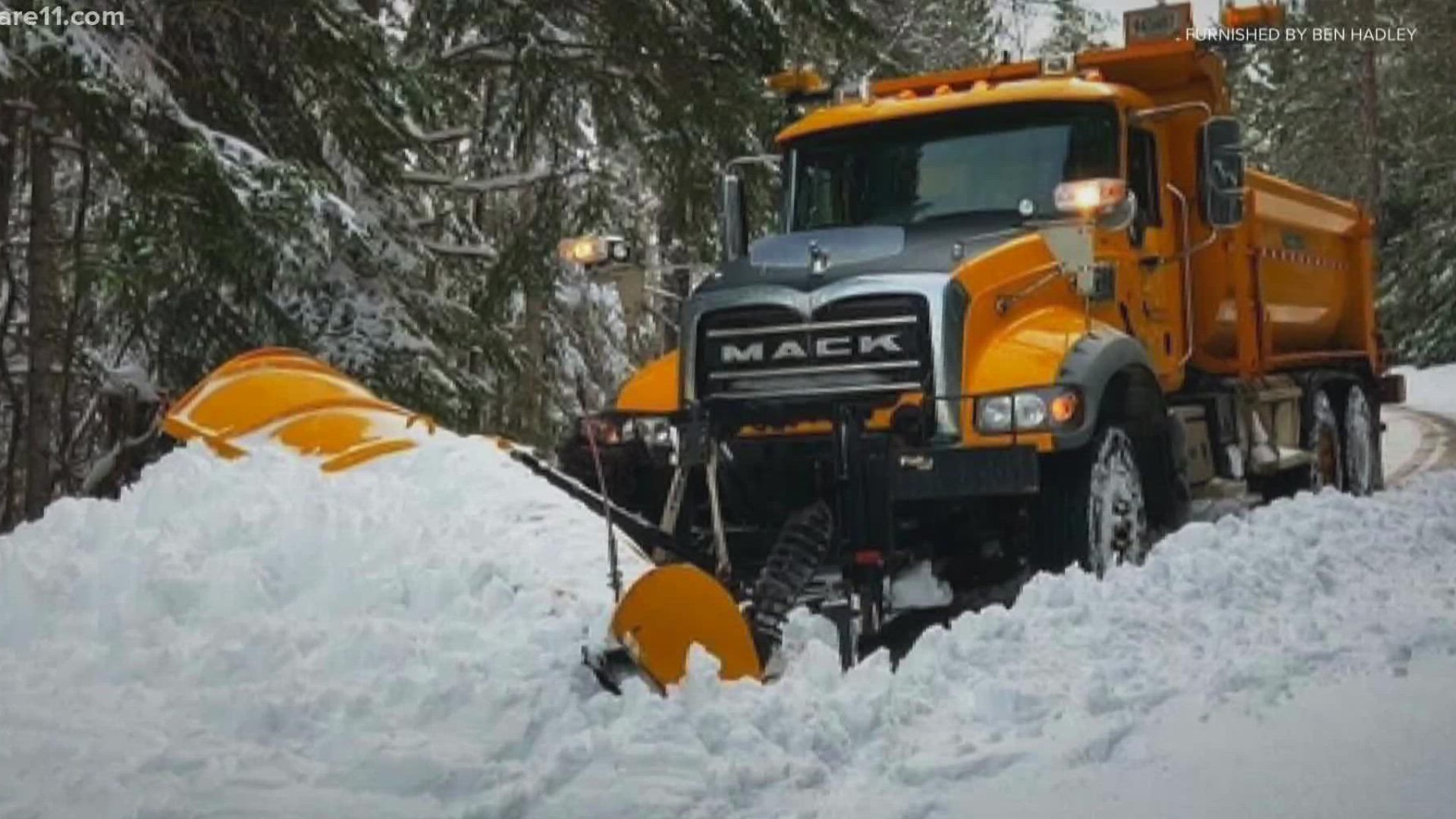ST PAUL, Minn. — Despite an ongoing, nationwide shortage of professional drivers for school buses and semis, when it comes to staffing snowplows, it depends on who you ask.
Anne Meyer, a communications specialist for the Minnesota Department Of Transportation (MnDOT), says they're cool.
Meyer: "A lot of folks have been asking this question, but MnDOT is in good shape when it comes to snowplow drivers."
Erdahl: "How?"
Meyer: "Most of our drivers are full-time, so they mow grass and do maintenance work in the summer and then shift to winter maintenance when the snow comes, so they're really with us all year long."
Erdahl: "Whether it's part-time or full-time, there are a lot of industries that still can't keep their employees. So, why do you think you still have all these drivers? There are no sign-on bonuses or trips being given away or anything?"
Meyer: "No, the state does sort of limit some of those opportunities, but we're also getting creative too. The game is changing and we need to stay competitive, so we're always paying attention. You might get a pension and benefits, so those are some of the advantages that they might not see in larger companies that pay them more."
Minneapolis and St Paul, which also have full-time drivers on union contracts, say they're doing just fine as well, but that's not the case everywhere.
Cook County highway engineer, Robert Hass, says they are struggling to keep up after a recent storm dumped two feet of snow on parts of region. They typically have 12 drivers covering a very large area.
Hass: "Right now we are short two drivers and, ultimately, it leads to a decrease in the level of service."
Kent: "That's almost 20 percent of your workforce if you've got two drivers out."
Hass: "Yep. It's an interesting one too, because one of our openings is in Hovland, so for the entire east end of the county, which includes plowing Grand Portage and everything east of Grand Marais, there's only one person."
And he says the snow is already deeper than the pool of candidates.
"Talking to guys that have been on the crew for 10 to 20 years, for the interview process, there would be 20 to 30 applicants," Hass said. "And I laugh because when we have postings here, I'm happy if we get one."
He says he's heard similar struggles across rural Minnesota, where housing, childcare and other shortages are magnified.
"You know, we are remote," Hass said. "We are at the butt-end of Minnesota. There's not a lot up here, so you also have to look at where we're living. You need to want to live up here. You better like the outdoors."
And until they find more drivers, you also better have patience.
"The road might take a little longer to get plowed," Hass said. "It will get done, but it just won't get done as soon as it has been in the past."

